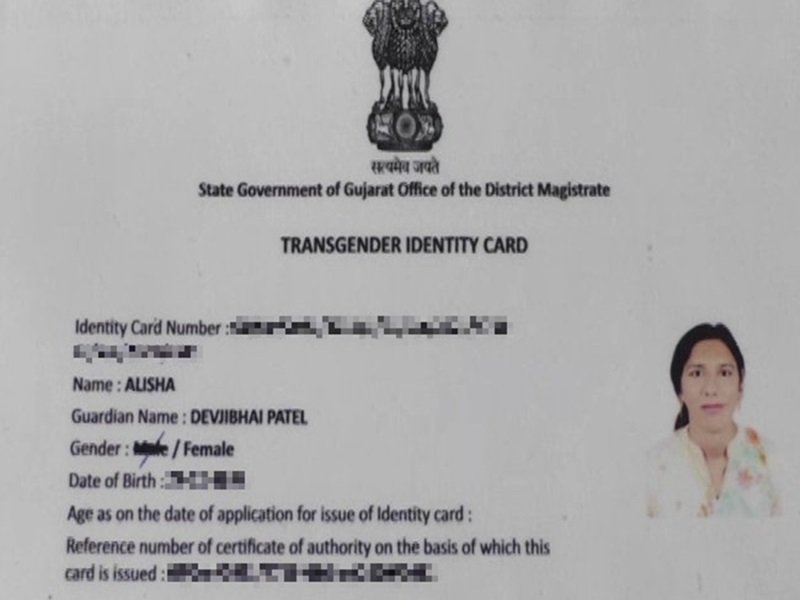The recognition and protection of transgender individuals’ rights have gained significant momentum worldwide. In India, the enactment of the Transgender Persons (Protection of Rights) Act, 2019, marked a pivotal moment in affirming the rights of transgender individuals, including the provision for a Transgender Identity Certificate. This blog delves into what the law says about the certificate, its legal framework, and the implications for transgender individuals seeking official recognition.
The Importance of a Transgender Identity Certificate
A Transgender Identity Certificate is a legal document that recognizes an individual as transgender. This certificate is critical because it:
- Provides formal acknowledgment of a transgender individual’s self-identified gender.
- Enables access to various rights, protections, and welfare schemes.
- Facilitates changes in official documents like Aadhaar, passport, and educational certificates to reflect the chosen gender identity.
Legal Framework: The Transgender Persons (Protection of Rights) Act, 2019
1. Key Provisions of the Act
The Act lays the groundwork for the issuance of the Transgender Identity Certificate. Here are the core aspects:
- Definition of “Transgender Person”: The Act defines a transgender person as someone whose gender does not align with their biological sex, including trans men, trans women, persons with intersex variations, and genderqueer individuals.
- Self-Perceived Identity: The Act emphasizes the right to self-perceived gender identity.
- Prohibition of Discrimination: It prohibits discrimination in education, employment, healthcare, and public spaces.
- Welfare Measures: The government is required to establish welfare schemes for transgender persons.
2. Procedure for Obtaining a Transgender Identity Certificate
The process for obtaining the certificate is outlined under the Act and its accompanying rules:
- Application:
- A transgender individual must submit an application to the District Magistrate (DM) of their residence.
- The application includes an affidavit affirming their gender identity.
- Verification:
- The DM verifies the application, ensuring it complies with the required documentation.
- Issuance of Certificate:
- Upon successful verification, the DM issues a Transgender Identity Certificate.
- This certificate acknowledges the individual’s gender as “transgender.”
- Change in Gender Identity:
- If a transgender person undergoes medical interventions such as surgery, they can apply for a revised certificate reflecting their new gender identity.
Supreme Court’s Role: The NALSA Judgment
The foundation for recognizing transgender rights in India was laid in the landmark case of National Legal Services Authority (NALSA) v. Union of India, 2014. The Supreme Court declared:
- Right to Self-Identification:
- The Court upheld the right of transgender individuals to self-identify their gender without the need for medical or surgical intervention.
- Legal Recognition:
- It directed the government to recognize transgender individuals as the “third gender” and ensure their inclusion in legal and administrative frameworks.
- Affirmative Action:
- The judgment mandated affirmative action to improve the social and economic conditions of transgender persons.
International Perspective on Transgender Identity Certificates
1. Argentina
Argentina’s Gender Identity Law of 2012 is often regarded as the gold standard. It allows individuals to:
- Self-declare their gender identity without medical prerequisites.
- Obtain new identification documents reflecting their chosen gender.
2. United States
In the U.S., laws vary by state. While some states allow self-attestation, others require medical evidence for gender marker changes on official documents.
3. United Kingdom
The Gender Recognition Act, 2004, enables individuals to acquire a Gender Recognition Certificate. However, it necessitates medical and psychological evaluations, which have faced criticism from LGBTQ+ activists.
Challenges Faced by Transgender Individuals
Despite legal recognition, transgender individuals in India face numerous challenges, including:
- Bureaucratic Hurdles:
- Lengthy and complex application processes.
- Insufficient awareness among government officials.
- Social Stigma:
- Persistent discrimination in workplaces and educational institutions.
- Ostracization by families and communities.
- Limited Access to Welfare Schemes:
- Many welfare programs are either poorly implemented or inaccessible.
Addressing the Gaps in Implementation
To ensure the effective implementation of the Transgender Persons (Protection of Rights) Act, the following measures are necessary:
- Awareness Campaigns:
- Educating the public and government officials about transgender rights and the application process.
- Simplifying Procedures:
- Streamlining the application process for the Transgender Identity Certificate.
- Strengthening Legal Protections:
- Enforcing anti-discrimination provisions more rigorously.
- Providing Comprehensive Support:
- Offering counseling and legal aid to transgender individuals seeking official recognition.
Success Stories: Empowering Transgender Communities
The issuance of Transgender Identity Certificates has been a transformative step for many individuals:
- Case Study 1: A trans woman in Maharashtra successfully obtained her certificate, allowing her to secure a government job and inspire others in her community.
- Case Study 2: A trans man in Tamil Nadu used his certificate to amend his educational records, opening new avenues for higher studies.
The Transgender Identity Certificate is more than a document; it symbolizes recognition, dignity, and empowerment. While India’s legal framework, bolstered by the Transgender Persons (Protection of Rights) Act, 2019, is commendable, challenges remain in its implementation. By addressing these issues and fostering inclusivity, society can ensure that transgender individuals enjoy their rightful place as equal citizens.
The journey towards equality is ongoing, but every step—like the Transgender Identity Certificate—brings us closer to a society that respects and celebrates diversity.
The Transgender Identity Certificate legally recognizes a transgender person’s self-identified gender, ensuring access to rights, entitlements, and social inclusion under Indian law.
To apply, individuals must submit a self-declaration form, along with supporting documents, to the District Magistrate. The process is outlined under the Transgender Persons (Protection of Rights) Act, 2019.
Challenges include bureaucratic delays, lack of awareness among authorities, and societal stigma, which often hinder smooth access to legal recognition.







